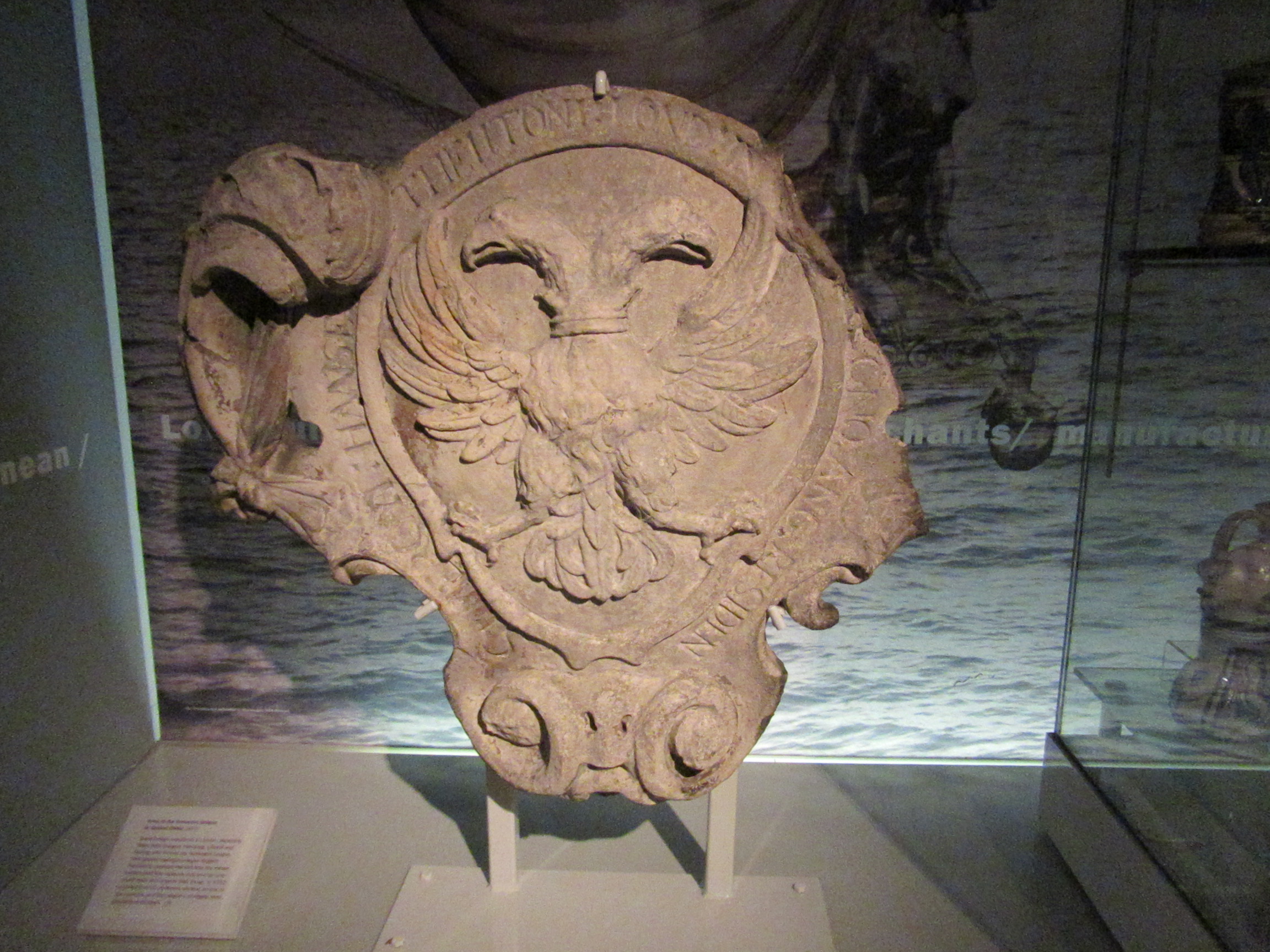In the depth of the Middle Ages, a powerful and enigmatic alliance emerged in the heart of Europe, transforming the economic landscape and leaving an indelible mark on history. Its name was whispered in bustling marketplaces and echoed across the vibrant ports of the Baltic Sea. Ladies and gentlemen, welcome to the mesmerizing world of the Hanseatic League – an intricate network of trading routes and a beacon of economic prosperity.
Stretching its influence across medieval Europe, the Hanseatic League harnessed the raw power of commerce, linking together an array of prosperous cities from Lübeck to Novgorod. Within the confines of this extraordinary union, merchants and traders cast aside their linguistic and cultural differences, converging to form a force that would reshape the very foundation of European trade.
But what set the Hanseatic League apart from countless other alliances of its time? Emerged in the 12th century, this extraordinary league was more than just a collaboration of cities. It was a testament to the power of unity, transcending borders and forging lasting connections between hinterlands and coastlines. As the tides of the Baltic Sea ebbed and flowed, the Hanseatic League grew evermore influential, becoming a catalyst for unparalleled economic glory.
The lifeblood of this vibrant alliance, unsurprisingly, was the sea. As the very arteries of commerce, the Baltic Sea and its intricate network of waterways served as the main thoroughfares for the exchange of goods, ideas, and prosperity. Skillful mariners would set sail from one Hanseatic trading post to another, braving treacherous storms and fickle currents, with their holds laden with the wealth of distant lands.
The Hanseatic League embraced a pantheon of goods, each pulse of trade contributing to the prosperous heartbeat of the alliance. From exotic spices and precious metals to timber and amber, the bustling ports and warehouses along the Baltic Sea overflowed with a cornucopia of treasures. These coveted commodities fueled the growth and opulence of the league, casting a spell of allure that attracted ambitious merchants from far and wide.
Join us as we delve into the labyrinthine routes, both on land and sea, that crisscrossed this mighty alliance. Discover the captivating stories of triumph and intrigue that permeated the Hanseatic League, illuminating a chapter of history where fortune was won or lost with every tide. Embark on a journey of trade and economic glory, as we unravel the secrets of this forgotten empire that soared to unimaginable heights.
Ladies and gentlemen, let us embark on this captivating voyage through time, as we unveil the mythical world of the Hanseatic League and the extraordinary trading routes that laid the foundation for its economic ascendency.
1. Reviving Maritime Trade: Unraveling the Historic Origins and Flourishing Impact of the Hanseatic League
Journey back in time to discover the enigmatic roots of the Hanseatic League, a powerful medieval trading network that reshaped the landscape of maritime trade. Originating in the 13th century, this league of cities extended its influence far beyond the shores of Northern Europe, fostering economic growth, cultural exchange, and unprecedented connectivity. Taking bold steps forward, member cities thrived under the Hanseatic umbrella, unleashing a legacy that continues to inspire and offer valuable lessons for the modern world.
As maritime trade flourished, the Hanseatic League brought unprecedented opportunities and transformations to the communities it touched. The league’s prominence emanated from its ability to effectively facilitate trade routes, establish common legal frameworks, and build a sense of solidarity among its members. Embracing this vision, cities such as Lübeck, Hamburg, and Bremen, among others, emerged as bustling hubs of commerce and innovation. With maritime trade at its core, the Hanseatic League paved the way for groundbreaking developments in banking, shipbuilding, and navigation, setting an example for future generations of traders and adventurers.
- Discover the fascinating beginnings of the Hanseatic League and its early members.
- Experience the innovative trade practices and legal frameworks that led to the league’s success.
- Uncover intriguing tales of prosperous Hanseatic cities and their impact on international trade relations.
- Explore the enduring legacy and valuable lessons that can be gleaned from the Hanseatic League in our modern interconnected world.

2. Navigating the Baltic Sea: A Detailed Exploration of Hanseatic Trading Routes and the Economic Powerhouse they Created
2. Navigating the Baltic Sea: Mapping Hanseatic Trading Routes
Embark on a captivating journey through time as we delve into the intricate web of Hanseatic trading routes that crisscrossed the Baltic Sea. These maritime highways not only connected bustling mercantile cities, but they also paved the way for the rise of a formidable economic powerhouse that shaped the region for centuries to come.
Unveiling the secrets of the trade, we explore how Hanseatic merchants skillfully navigated these waters, defying the challenges presented by changing weather conditions and maritime geography. From Novgorod to London, their journeys involved arduous ventures across the treacherous Baltic, ensuring the flow of coveted goods such as timber, furs, amber, and salt. Such navigation prowess enabled the Hanseatic League to exercise a profound influence on Europe’s economic landscape, driving commerce and forming lucrative alliances to consolidate their power.
Key Aspects:
- Understanding the Hanseatic League’s formation and purpose
- Investigating the trading routes from Visby to Lübeck
- Exploring the role of staple rights and Hanseatic influence in Baltic cities
- Analyzing the impact of Hanseatic political alliances on trade and economics
Discover the Trade Routes:
Delve into the vivid tales of bustling commercial cities and maritime adventures as we dissect the significance of key trading ports along the Baltic Sea. Discover how Hanseatic merchants skillfully navigated their way through hallowed halls of power, solidifying their dominance in the region. Uncover the fascinating intricacies of Hanseatic trade routes, which acted as the lifeblood of the Baltic, and witness the indelible mark they left on Europe’s economic landscape.

3. Economic Lessons from the Hanseatic League: Insightful Strategies and Practices that Seduced the Baltic Sea Region
Embarking on a journey through history, the economic lessons from the Hanseatic League continue to captivate with their innovative strategies and practices that enabled unparalleled success in the Baltic Sea region. Here, we explore the fascinating insights gleaned from this influential medieval alliance, which not only shaped the economic landscape of the time but also left a lasting legacy for future generations.
- Economic Cooperation: The Hanseatic League’s core foundation was built upon strong economic cooperation among its members. By establishing an extensive network of trading cities, they seamlessly connected markets and facilitated the exchange of goods, fostering interregional commerce.
- Trade Monopolies: The League skillfully leveraged their influence to secure exclusive trading rights, granting members an advantageous edge in the marketplace. This strategic monopolization of key industries, such as the lucrative Baltic timber trade, enabled the League’s cities to thrive financially.
- Legal Framework: Recognizing the significance of a well-defined regulatory framework, the Hanseatics developed a common set of laws known as the “Hanseatic Law.” This standardized legal system facilitated dispute resolution, ensured fair business practices, and instilled confidence among traders, attracting merchants from distant lands.
- Collective Defense: Understanding the importance of security in prosperous trade, the League organized a collective defense mechanism known as the “Hansa Militia.” This alliance provided protection for member cities against piracy, raids, and other threats, safeguarding the integrity of their economic endeavors and reinforcing stability.
History has much to offer in terms of valuable insights, and the Hanseatic League’s economic strategies and practices certainly stand out. By emphasizing cooperation, monopolies, a strong legal framework, and collective defense, this medieval powerhouse left an indelible mark on the Baltic Sea region, showcasing the transformative power of innovative economic tactics.

4. Charting a Sustainable Future: Applying Hanseatic Principles in Modern Trade to Boost Economic Prosperity in the Baltic Sea
The Baltic Sea region has a rich historical legacy rooted in trade, culture, and cooperation. Revisiting the Hanseatic principles that shaped the region’s success during the Middle Ages, we can unlock new opportunities to foster a sustainable and prosperous future. By applying these time-tested principles to modern trade, we can drive economic growth, enhance environmental sustainability, and strengthen societal well-being.
- Building Strong Alliances: Collaborative partnerships amongst neighboring countries and businesses are crucial for achieving mutual economic prosperity in the Baltic Sea region. Embracing the spirit of the historical Hanseatic League, we can encourage cooperation, knowledge sharing, and joint investments, ultimately leading to increased commercial activity, job creation, and improved living standards for all.
- Promoting Innovation and Sustainability: Modern trade should prioritize innovation and sustainability to mitigate environmental impacts and ensure long-term economic viability. By harnessing technology and promoting sustainable practices, we can optimize resource utilization, reduce emissions, and protect the fragile ecosystem of the Baltic Sea, ensuring its continued prosperity for generations to come.
- Empowering Local Entrepreneurship: Nurturing the entrepreneurial spirit within local communities is vital for a thriving Baltic Sea region. Emphasizing fair and inclusive trade policies, providing access to financing, and supporting skill development programs can empower aspiring entrepreneurs, fostering a vibrant business environment and enabling sustainable economic growth.
Future Outlook
As we bid farewell to the grandeur of the Hanseatic League, we are left marveling at the vast tapestry of maritime history woven throughout the Baltic Sea. Like a symphony performed by the waves, the trading routes of this legendary league brought together cultures, goods, and ideas, creating an economic glory that resonated for centuries.
Imagine the bustling ports, teeming with ships from far-flung lands, adorned with sails billowing like proud giants. Merchants from all corners of the known world would gather, their ambitions intertwined within the labyrinthine network of trade routes. From Bergen to Bruges, Lübeck to Novgorod, the Hanseatic League cast its powerful web across the Baltic, leaving no corner untouched by its influence.
The Baltic Sea, once a mere body of water, evolved into a watery highway connecting nations in an unparalleled manner. The Hansa, as it was affectionately called, transformed coastal settlements into thriving metropolises, their markets alive with merchants haggling over exotic spices, precious textiles, and coveted furs. The very essence of prosperity was anchored upon the faith in a united trading alliance.
And prosper they did, the members of the Hanseatic League. With their steadfast dedication to fair trade, robust laws, and code of conduct, these enterprising souls rose above the tumultuous sea of commerce and carved out their economic dominion. As wealth poured in, so did knowledge and innovation. The league fostered intellectual exchange, paving the way for incredible advancements in navigation, shipbuilding, and finance.
Yet, like all great tales, the glory of the Hanseatic League was not without an eventual decline. Political shifts, the emergence of new trade routes, and the advent of direct trade between nations gradually chipped away at the league’s supremacy. As the centuries passed, its once-proud ships faded into the annals of history, their sails rugged and tattered, but their legacy forever imprinted upon the shores of the Baltic.
Today, as we reflect upon the Hanseatic League, we recognize the profound impact it had on our world. Its trading routes and economic prowess have left an indelible mark upon the Baltic Sea, shaping the lives of countless generations. The memory of bustling ports and bustling merchants may have faded, but the spirit of collaboration, unity, and the pursuit of economic prosperity still thrives within the very waters that once echoed with the sounds of bustling commerce.
So let us remember the Hanseatic League, not merely as a chapter in a history book, but as a testament to the power of trade and the transcendence of borders. Let us honor the legacy of these intrepid seafarers, whose rich tapestry weaves together the destinies of nations and celebrates the economic glory of the Baltic Sea.

